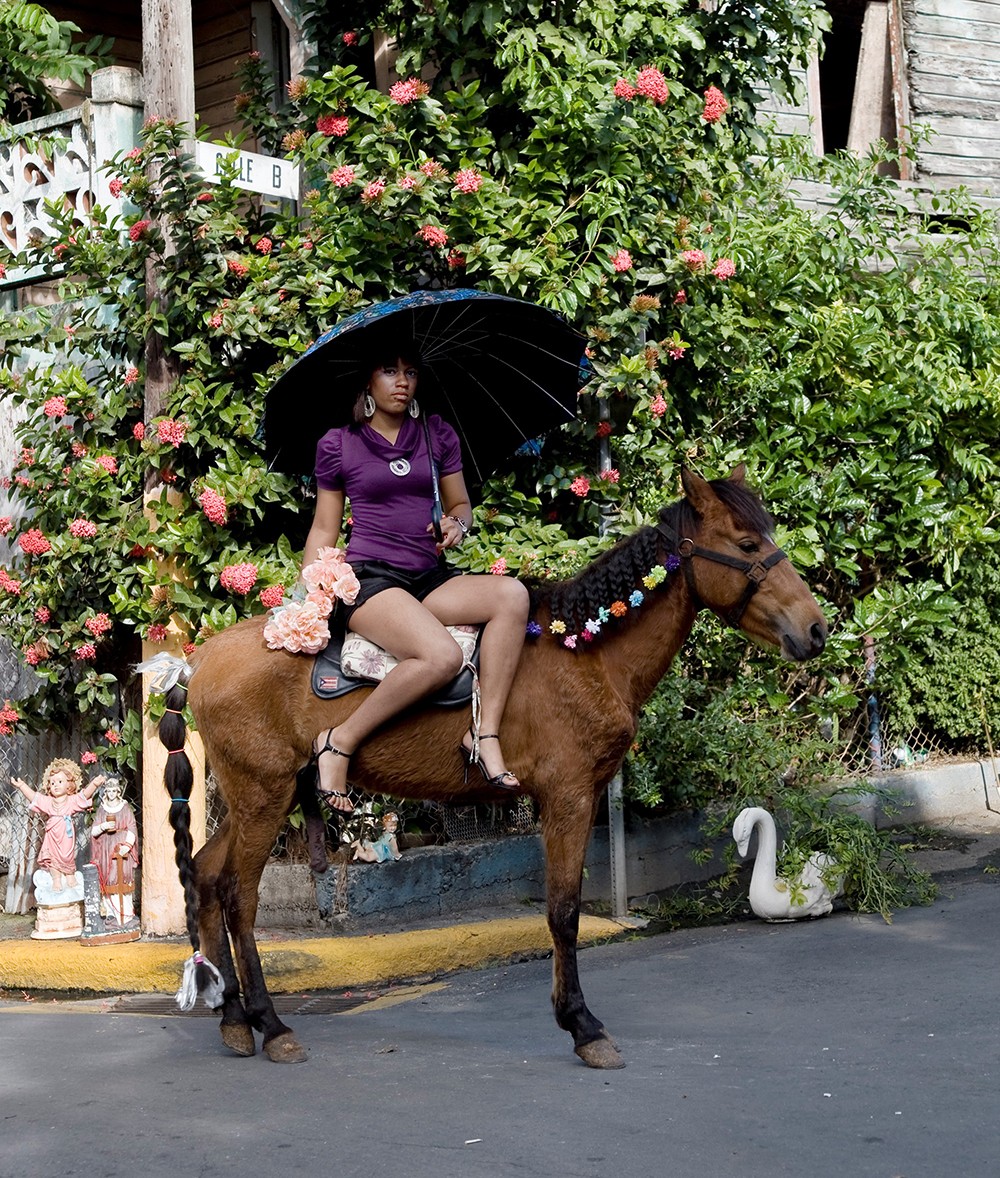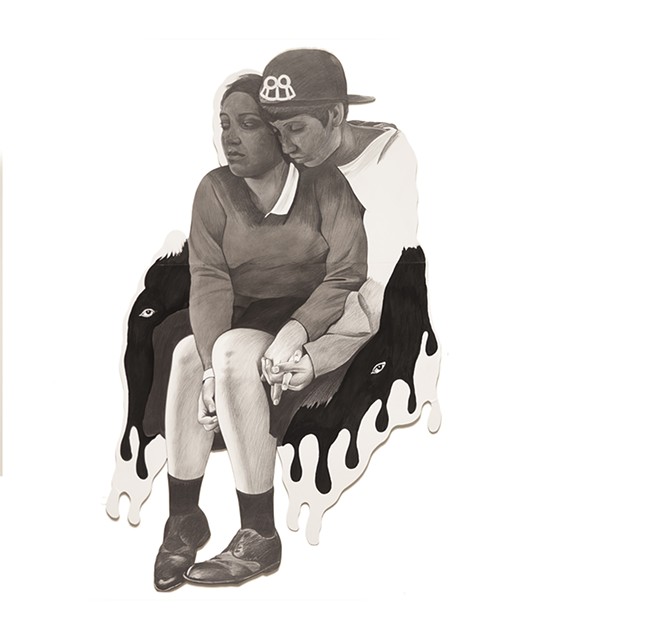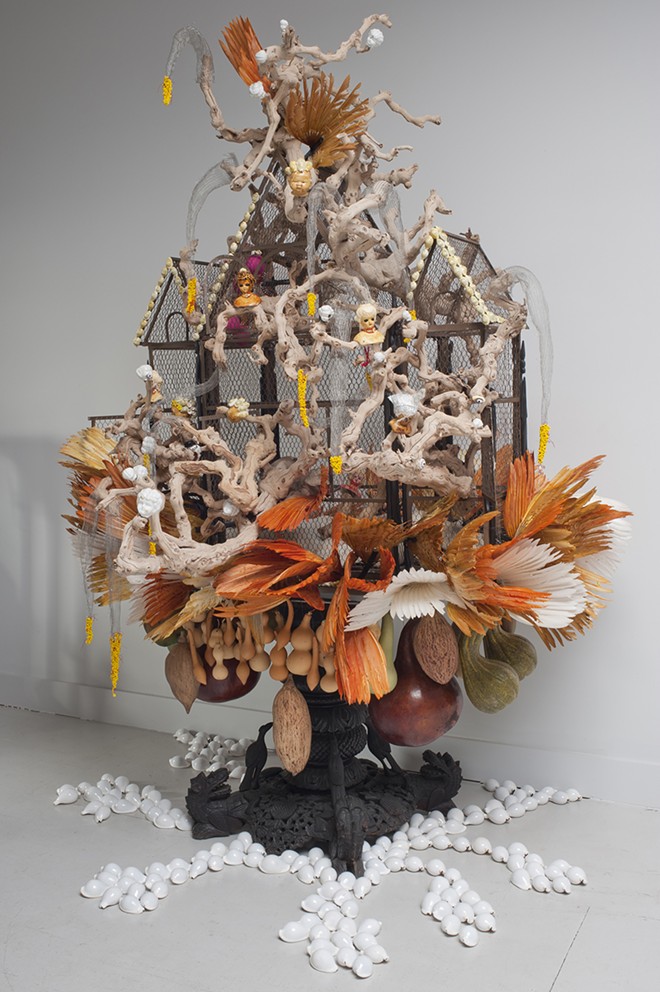Summers at Rollins College's Cornell Fine Arts Museum used to be slow, with faculty shows that lingered through the hazy days like leftover hot dogs on the grill. No more of that: This summer's Displacement: Symbols and Journeys crowds resilience, trauma, alienation and hope into a single exhibit of 23 artists. Even if one could avoid the news, rhetoric about immigration permeates our media, making this show more than just timely; it is an urgent call to examine the human dimensions of borders and isolation.
The dark reality of global culture is that boundaries still exist, and they matter a lot. Fred Wilson starts the viewer with the involuntary journey of African-Americans. "The Unnatural Movement of Blackness" is an internally lit globe festooned with a diaspora of black crystals, the African experience blocking out this globe's light. Squeam-inducing for some viewers, perhaps; but truth is often hidden, and discomforting when fully revealed.
Large drawings by Hugo Crosthwaite adorn multiple walls with the labyrinthine architecture of bordertown Tijuana. His characters echo Mexican murals in a narrative of unexpected humanity and tenderness. In contrast, David Taylor's color photographs of American border monuments and smugglers are nihilistic landscapes of hopeless emptiness. In one image, the faces of just-caught cross-border drug smugglers are blurry, expressionless masks. No global culture for them.
Local artists' work hangs along with that of Iranian-born Shirin Neshat, whose Women of Allah series seeks to portray the experiences of Muslim women. Wanda Raimundi-Ortiz's graphite portrait of her own mother, a Puerto Rican immigrant, shows a strength and majesty that curiously echoes Neshat's photographic self-portrait (with son and gun). Portraits are instructive; one sees kinship in the most exotic of faces, dissolving borders and cultural blockades. Rima Jabbur contributes a graphite drawing, with red stripes echoing the Syrian flag. With its reference to Hindu images of destruction, this picture expresses her native land's awful turmoil.
No country is as sensitive to its borders as Cuba, and Havana artist Sandra Ramos offers several insights into the condition of isolation. "Transitory Identities," a large circular sculpture, brings out her personal experience moving from revolutionary Havana to Miami, and thus into a larger world. Eight world cities ring a character she calls "La Pionerita," or Pioneer Girl, traversing the globe. In "Aquarium," a video installation, La Pionerita is inside an aquarium, symbolizing Cuba's isolation from America; she then becomes Cuba itself, a tropical island inside the aquarium. Nothing gets in, nothing gets out.
But getting at ease with displacement is here, too. Rina Banerjee's two works in the show are universal in nature. As an Indian-born, London-raised American, she's creating sculptures that synthesize South Asian, European and American symbols together in wickedly beautiful installations. A dress stand is hung with hundreds of richly textured objects, from bottles to painted eggs to cages to stones, shells and doll heads in a sensory celebration. Each work's title is a story in itself, typically Indian: "A Lady of Commerce – Wooden. Hers is a transparent beauty, her eager sounds, her infinite and clamorous land and river, ocean and island, earth and sky ... all contained, bottled for delivery to an open hole, a commerce so large her arms stretched wide and with her sulfurous halo – a ring of glass, she will swallow it all."
Latin-American borders rise high in this show. Caribbean and Middle Eastern borders loom also. Today, your own smartphone miniaturizes the theme of globalism, integrating parts from dozens of countries. It makes you fearless. But politicians seem busy doing just the opposite to people, haranguing against global movement and making abstract lines of fear out of our borders. Real fear, meanwhile, is felt by those crushed against these borders, and this show brings a human dimension to those darker lines slicing the globe.




